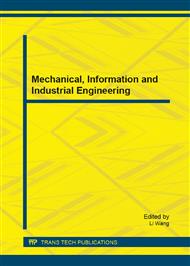p.36
p.43
p.47
p.51
p.55
p.59
p.65
p.69
p.79
FE Modeling of the Inertia Friction Welding with a Modified Friction Law
Abstract:
The subject of this paper was the presentation of a holistic, fully-temperature-coupled FE model of inertia friction welding based on the modified friction law, which divided the friction welding process into beginning friction stage and steady equilibrium friction stage. At each of the stage Coulomb friction model and shear friction model were adopted respectively. The present FE model predicted the temperature of the welding joint as well as variation of friction torque and relative rotating velocity of the work-piece during the welding process. The evolution of friction torque and rotating velocity were compared with the experimental measurement. They showed a good agreement between them.
Info:
Periodical:
Pages:
55-58
Citation:
Online since:
March 2015
Authors:
Keywords:
Price:
Сopyright:
© 2015 Trans Tech Publications Ltd. All Rights Reserved
Share:
Citation:


